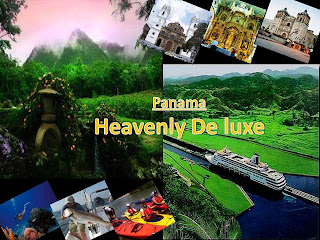PANAMA
There is NO other country in Central America has highly developed urban area and tropical jungle at such close distance as Panama where we can literally go wildlife watching,slow walk for a few hours along Pipeline Road near Gamboa where we will see a higher diversity of wildlife than we could see spending a day at any park in Central America.
Panama..Heavenly Deluxe here mean that it’s full with the deluxe of nature heaven where we can experience the shining clear blue water,green with nature and fresh air sky.
What makes Panama so Special?
Algae-covered sloths, tiny marmosets and night monkeys make their home in the canopy. The strange bushdog and the giant anteater hunt and forage in the undergrowth, and the capybara, largest rodent in the world, moves in groups along the edge of rivers and lakes. Most of these mammals do not occur farther north into Central America, and Panama provides a unique opportunity to observe these fascinating creatures in
their habitat.
Birdwatchers have enjoyed Panama’s natural wealth for over a century and bird collectors operated in this rich environment as far back as the mid-nineteenth century. This is no wonder since Panama is home to many of the most-sought jewels on any birders list. The majestic harpy eagle, largest of the neotropical raptors, is still seen occasionally by birders in the Darien and along Pipeline road, as well as its close relatives, the solitary and the crested eagle. Five species of macaws and a dozen and a half species of parrots, parakeets and parrotlets add more than just a visual treat, a lot of decibels to the jungle’s dawn symphony. Toucans, bell birds, umbrellabirds and motmots, and even the resplendent quetzal, mostly restricted to the cloud forest of Chiriqui, are other beautiful elements to enrich the country’s avifauna, exceeding 900 species.
Panama is fish heaven, whether for the aquarium enthusiast, dip-netting jungle pools and streams, or the deep-sea fisherman trolling offshore. From the small multicolored Killifish and dwarf armored catfish, inhabiting the fresh-water streams and lakes, to the monstrous black marlin off Hannibal Bank and Pinas Bay.
Plant enthusiasts will be equally astonished by the incredible biodiversity found in a country smaller than South Carolina, barely 30,000 square miles. Scientists estimate that over 10,000 species of vascular plants exist in Panama, and many first-time visitors to the lowland rainforests will get the impression that they are all growing right in front of them.
Among the showpiece groups of Panamanian flora are the orchids, with over 1,000 species, ranging from sea-level to the highest mountain peaks.
AMAZON RAINFOREST
The Amazon rainforest has a huge live collection of flora species. Botanical experts say that in 2.5 acres of the forest you can find 700 different species of trees and twice that number of plants. One of the most awesome things you will notice is that the forest has a high density of trees and they are very tall. Many trees reach 130 meters high (some species reach 200 feet), and under they form a shadowed place where at times is hard to see the sun. The high canopy of the Amazon rainforest is a very unknown place even for most botanists and until recently very few researches have even explored this hard to reach area of the forest. The high canopy is also the home of thousands of still undiscovered species of insects and birds.
Tremendously reach in animal life, the jungle is populated by insects, arachnids, reptiles, amphibians, birds and mammals.
The following list of Amazon rainforest animals - in no particular order - is an introduction to some of the most beautiful - and most dangerous in some cases - criatures of the jungle.
Your next adventure travel to South America or jungle trekking experience will be better prepared and more enjoyable overall by getting acquainted with them.
1. Spider monkey
2. Golden Lion Tamarin
3. Sloth
4. Giant Anteater
5. Giant River Otter
6. Capybara
8. Toucan
9. Macaw
11. Electric Eel
12. Piranha
13. Black Caiman
14. Anaconda
15. Jaguar
16. Poison Arrow Frog
17. Bromeliads
18. The orchids
19. Water Lily
20. Heliconia
21. Kapok Tree





















